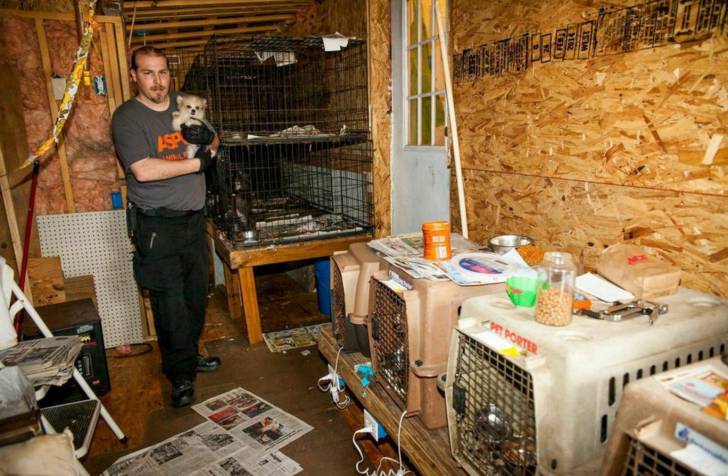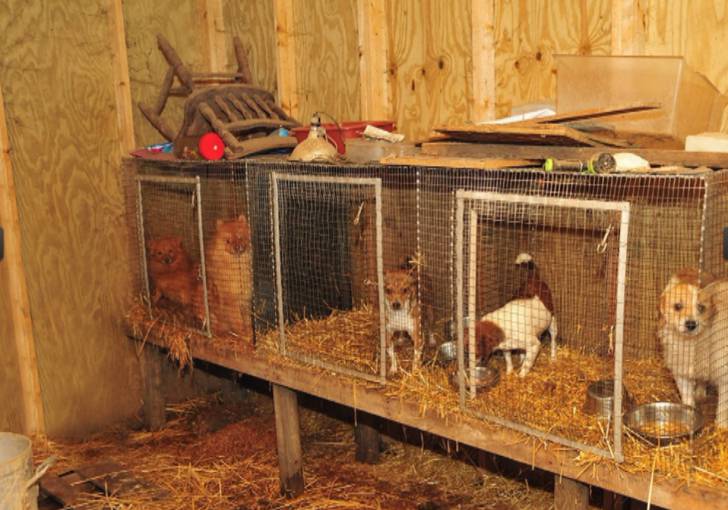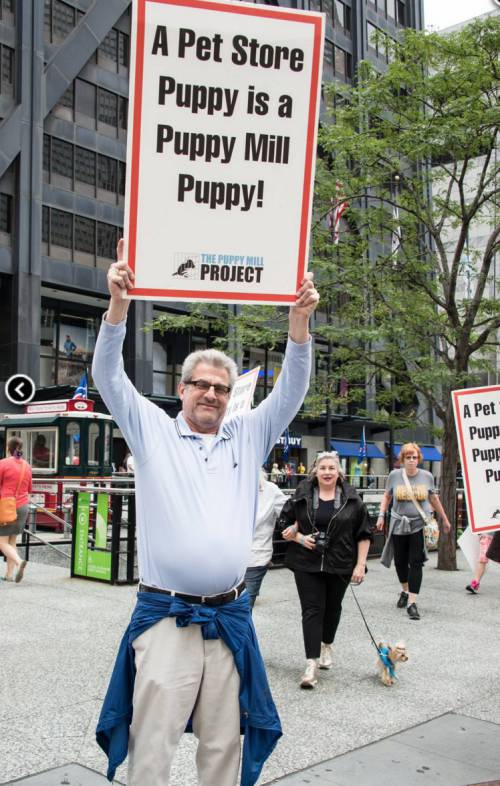For those of you who don’t know, a puppy mill, also known as a puppy farm, is a vast scale dog breeding facility. According to the Puppy Mill Project, there are currently 10,000 puppy mills in the U.S and the treatment of animals in these mills is extremely concerning. In particular, these commercial breeding farms are failing to provide necessary medicinal treatment, proper nutrition to their puppies, and also socialization and physical activity that these poor puppies need at such an important part of their lives.

Where are puppy mill puppies sold?
- Puppy mill puppies are generally sold in pet stores and over the Internet.
- Pet stores are the #1 sales outlet for puppy mills.
- Puppies can be born in California and shipped all the way to the East Coast or Midwest. Being shipped is as terrible as the puppy mills, themselves. Puppies can sometimes go without food or water for up to 12 hours in small confinements that perpetrate the spread of disease. Several of these puppies do not always survive.

So, why is it so difficult to stop puppy mills?
- Many individuals don’t know about puppy mills and what goes on behind closed doors; they just want their purebred dog with the papers, no questions asked.
- Government controls and taxes on dog breeding may also adversely affect reputable breeders.
- Banning or controlling the sale of puppies from pet stores is also unpopular because it limits buyer choice, and makes it troublesome and more costly to get purebred dogs.
Why it is important to stop puppy mills?
- In numerous puppy mills, puppies are kept in cramped quarters with poor sanitation and which results in tragic sickness and the spread of disease.
- Another significant concern for breed supporters is the dilution of the gene pool that happens at these puppy mills. Where proficient breeders are concerned with carrying on the best of the breed to develop strong and healthy dogs, puppy mills are rather focused on quantity produced in order to profit from their dogs.
- Puppies in puppy mills are exposed to various ailments and bred on poor hereditary lines, they also often have exceptionally poor temperaments because of this.
- Puppies that are bred in puppy mills often appear physically malnourished and weak.

What can we all do to help stop puppy mills?
Spread the Word
The first step to stop puppy mills is to get the information out there. One of the best places to distribute such information is in our schools. Children are usually very interested in learning about animals and dogs, much more than adults. If you are involved in the educational system, please consider doing a field trip to a nearby Humane Society. Alternatively, invite speakers over from a nearby animal shelter or rescue to do a presentation on caring for animals, why to stay away from puppy mills, and what everybody can do to stop puppy mills.
You can also get involved with certain activist groups like the Puppy Mill Project. This particular group participates in peaceful protests, large scale educational programs, and community events that support the cause.

At last, the most ideal approach to stop puppy mills is to tell as many individuals as we can about them. If your friend, family, co-worker, or neighbors are considering getting a pet, then tell them about puppy mills and suggest near-by adoption sites, or local reputable breeders.
